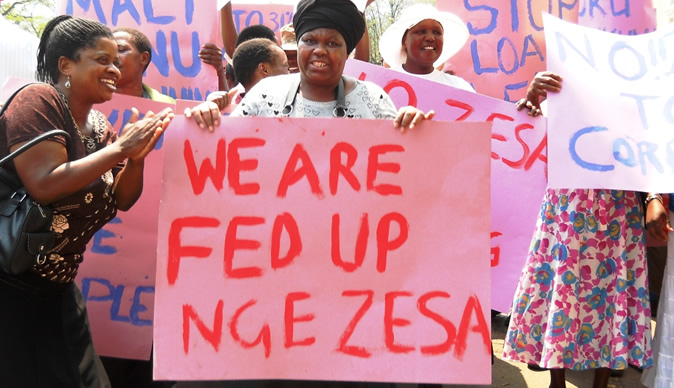Zesa to apply for tariff review . . . again
By Livingstone Marufu
The Zimbabwe Electricity Supply Authority will submit a fresh application for a tariff review next year after the Zimbabwe Energy Regulatory Authority blocked its most recent bid.

The power utility contends that increasing energy costs will help it pool resources needed to guarantee stable supplies and pursue power-generating projects.
Zesa has had to pursue debtors after Zera blocked a proposed 14 percent tariff hike from the current USc9,86 per kilowatt hour (kWh). Already, 35 000 customers who owe over US$140 million have since been disconnected from the grid by the Zimbabwe Electricity Transmission and Distribution Company, a unit of Zesa.
ZETDC prepays US$7 million a month to import 400MW from Hydro Caborra Basa of Mozambique and South Africa’s Eskom. Zesa spokesperson Mr Fullard Gwasira said that the utility’s credit control policy was meant to guarantee stable power supplies.
“ZETDC is paying upfront for electricity imports just like we do in our homes and it is only prudent that customers appreciate the need to pay for their consumption to maintain security of supply.
“As a result, ZETDC has disconnected 35 000 customers over a debt of US$140 million. Other defaulting customers have also been handed over to our lawyers over a consolidated debt of US$572 million,” said Mr Gwasira.
Consumers owe ZETDC more than US$1 billion. Zimbabwe is generating 1 200MW against peak demand of more than 2 200MW. Zesa says local authorities, which are immune from disconnections as per a Government directive despite owing more than US$300 million, are among some of the stubborn debtors. ZETDC is also managing key accounts of large customers to ensure they settle their bills within prescribed payment cycles.
In addition, some debts are being loaded into the prepayment metering system where 40 percent recoveries are made on each electricity purchase. Stop-order arrangements have also been made with farmers to enable them to manage their debts.
Zesa said it had to apply for an upward electricity tariff review owing to the loss of cheap power from Kariba Power Station, whose output fell to 285MW from from 750MW; the introduction of premium emergency diesel power plant at Dema; and rising power imports.
The parastatal deferred maintenance due to these circumstances. Zesa is importing power at USc14c/kWh and selling it at USc9,6c. The cost is even higher for emergency power imports, which come in at USc18/kWh. Former Zesa CEO Engineer Ben Rafemoyo recently warned that a new tariff structure “is a bullet we must bite”.
“Not doing it in time will just delay the right thing but later on it will catch up with us. Admittedly, our economy is not in its best shape and whatever figure, no matter how justifiable it is, will become a burden to customers, but guess what: the cost of not having power is a lot more than having power at the right price.
“In my view, it is not sustainable (to continue with a lower tariff). We will reach a stage where they (Zesa) will fail to service their creditors. That is the fear. “As a country, we need to quickly put our house in order in terms of pricing tariffs and so on,” said Eng Rafemoyo.
Government is embarking on major energy projects such as the expansion of both Kariba South Hydro and Hwange Thermal power stations. Private sector players have also been engaged to develop non-renewable power stations.
It is estimated that the expansion projects will start adding more than 600MW to the national grid by 2017. Separate greenfield investments being pursued across Southern Africa are also expected to stabilise supplies. The Sunday Mail






